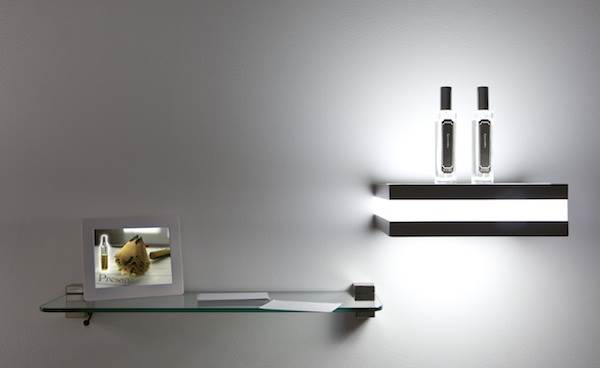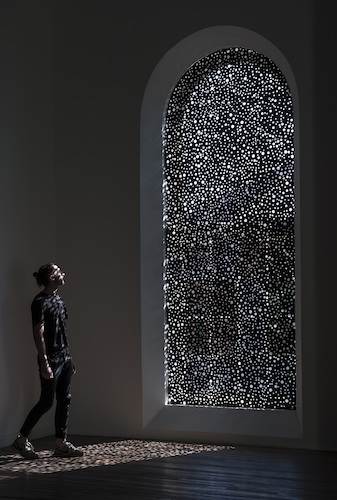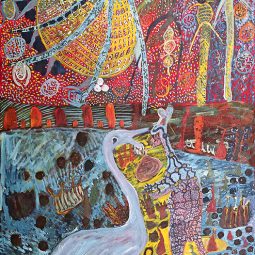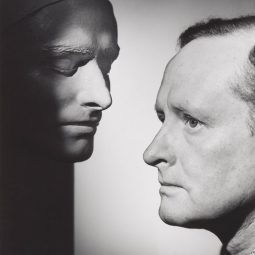Lux is a measure of reflection and the intensity of light, as well as the title of Mangano and Mangano’s video work from 2014. In the composition the sisters perform in different landscapes, each with a unique sound recording taken on site. Although the locations aren’t named, flashes of colour and distinct audio spell seasonal change. On our cover, Work Horse II (2015) by Karla Dickens combines personal and political histories by using found objects including a horse harness, wooden spikes and forged steel. Together the assemblage is emblematic of the forced obedience, assimilation and labour imposed on young Indigenous women, in a time far gone but not forgotten.
Iranian-born Adelaide-based artist Nasim Nasr’s new photographic series Forty Pages (2016)presents multiple headshots where her visage is gradually covered with black stamps to represent the transience of her identity. The artist said “Each passport stamp, representing either the departure from or entering a country, is integral to one’s history of the difficulties of freedom of movement and disempowerment by country of birth and its life-boundaries. At every national border one is submissive and defenseless to officialdom. This is a potent control upon individual existence and independence, especially in the contemporary world of displacement and separation between East and West.” This suite sits in the context of a practice which considers dualities, of male and female, what is hidden and exposed, the experience of enforced and self-censorship as well as moving from one culture to another.
These four artists, as well as a handful of others were previously included in ‘Whisper in my mask’ for the TarraWarra Biennale of Art, 2014, co-curated by Natalie King and Mundine. Today, ‘Sixth Sense’ re-examines how multidisciplinary artworks can be a compass to essential states and subjective memory, as Mundine said, “I’m always noting artworks everywhere I go and thinking of how they remind me of perspectives and themes on a wide variety of ideas and responses.” Instead of waiting to be revealed these works speak to other senses by subverting the ‘normal’ channels by which we receive information. Mundine explained, “The new artists included are Kirkbight, Moore, Raabe, Kngwarreye and Foreshew. Both Foreshew and Moore talk directly to the senses of proprioception, sense of body position, kineosphere and smell. Kngwarreye’s is a form of synesthesia, of mixed response in a Western sense, as the Yam is a song, a dance, the very embodiment of herself.”
Les Eaux D’Amoore (2014) by Queenslander Moore is a series of portraits in perfume. As an Aboriginal boy experiencing family, the anxiety of youth, as well as a hostile white society, graphite pencil, Brut 33 and rum was particularly on the nose. Because memory and smell is subjective the fleeting aromas in his installation are both diaristic and vague, and also address the value of being odourless but perfumed in Western society. Foley presents IOU (2016), a new work using honey and ash, which she calls a ‘memorandum of understanding’. In it, she honours the physical, intellectual and sensual imprint the 18,000 year old rock-art in the Burrup Peninsula landscape represents. It is the biggest and oldest collection of its kind in the world and has no heritage status to protect it from neighbouring oil and gas infrastructure.
The senses are a powerful apparatus. Sensory deprivation or distortion in the short term can be therapeutic, offering a moment for meditation and focus, but extending this experience can be traumatic and is often cited as a form of torture. This dichotomy runs parallel to our understanding that life is comprised of both pleasure and pain.
National Art School
Until 15 October, 2016
Sydney








